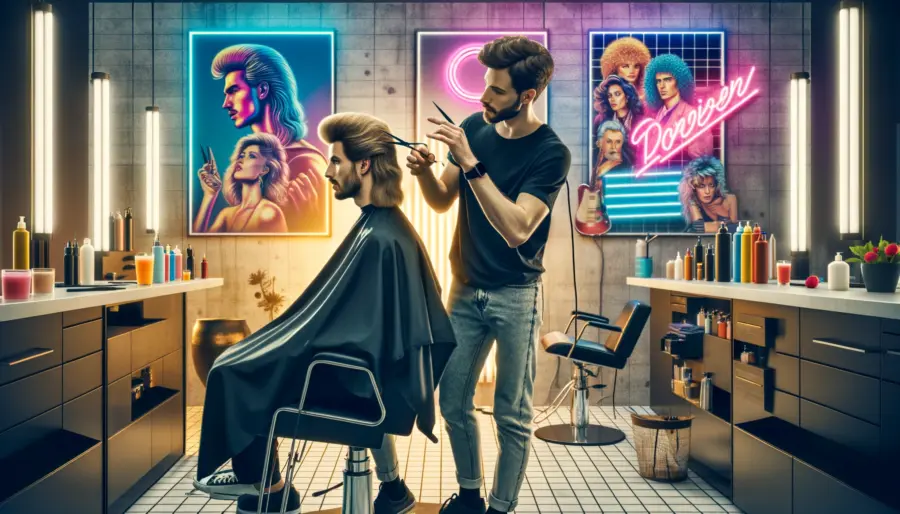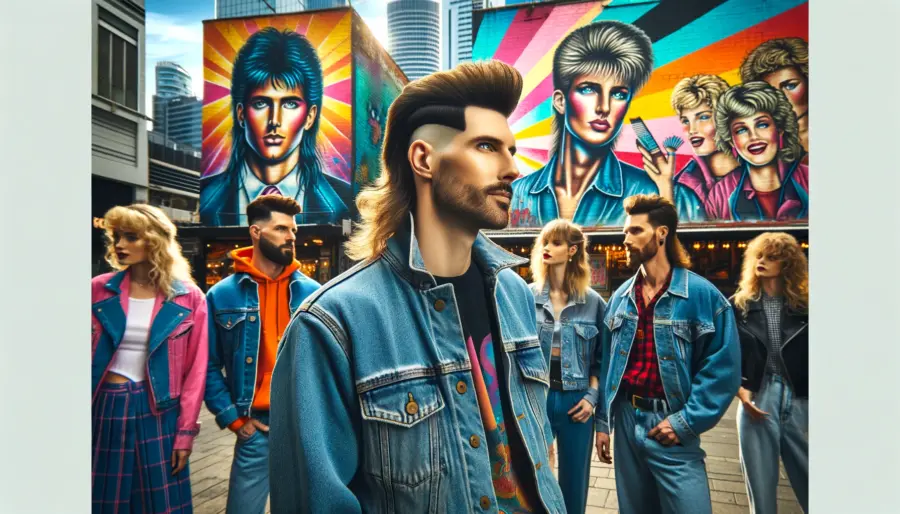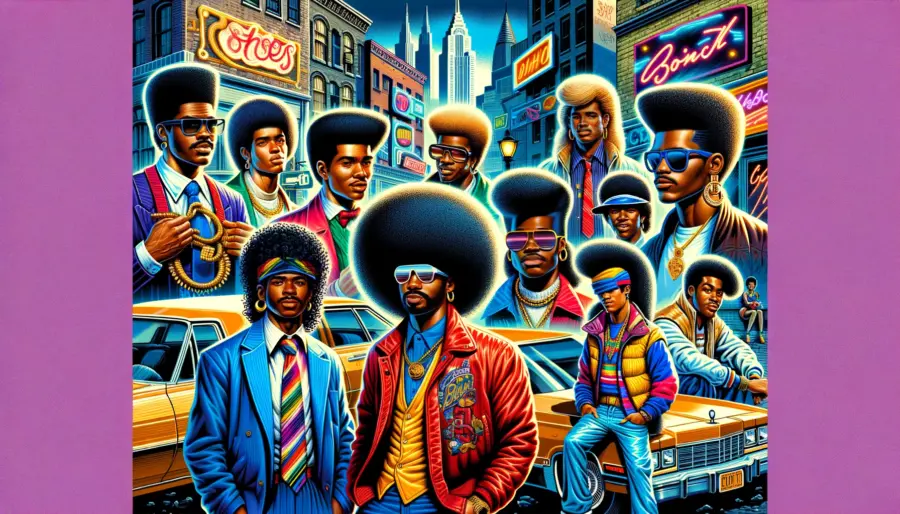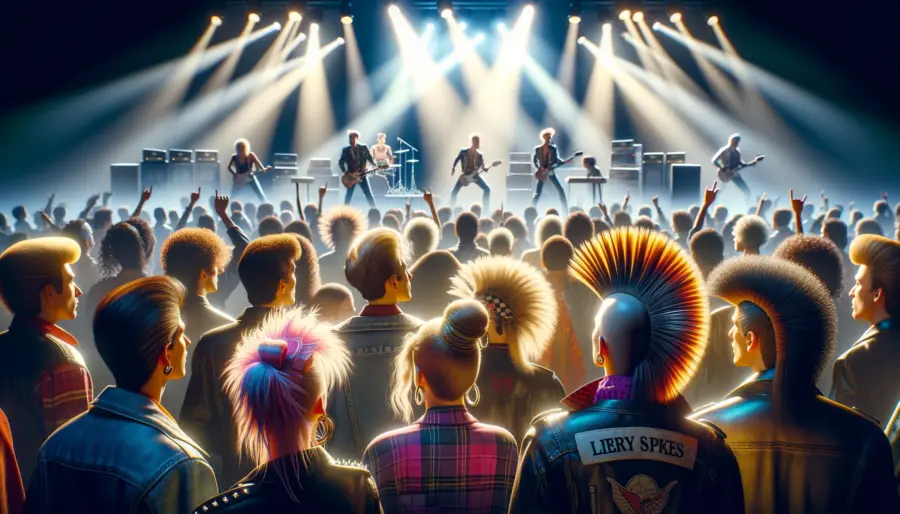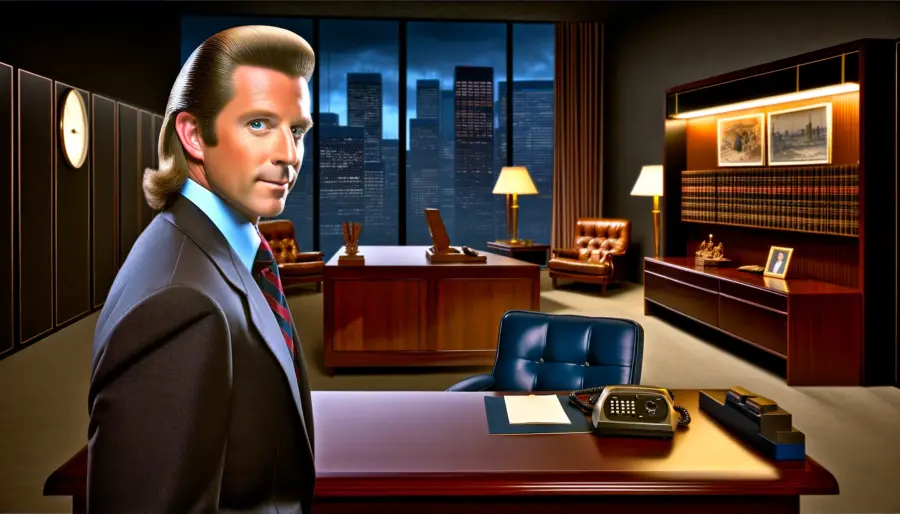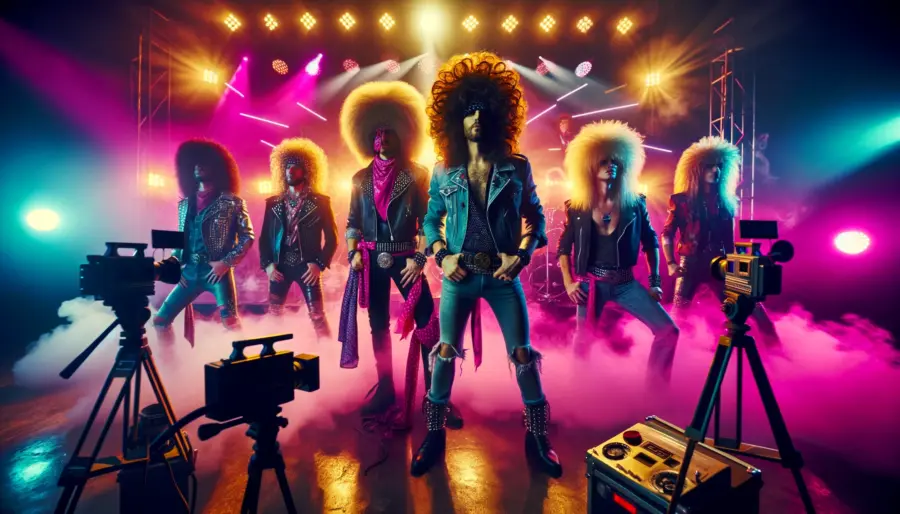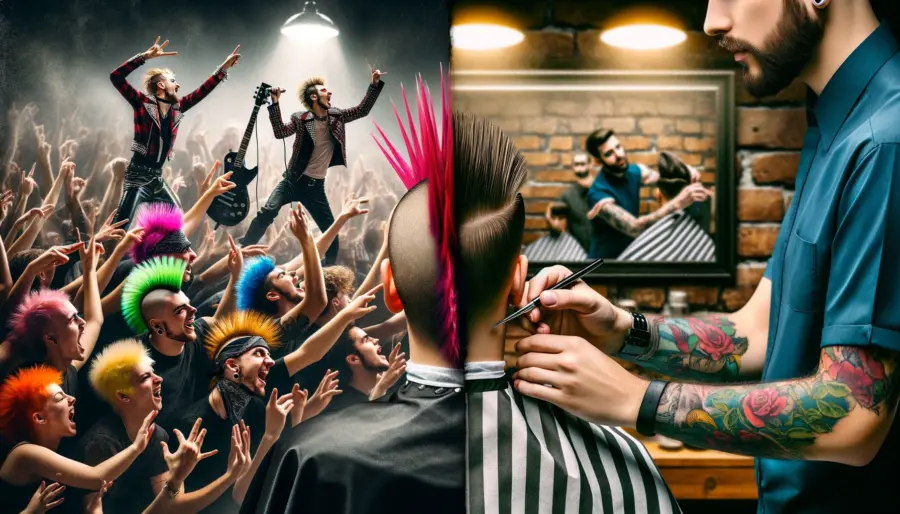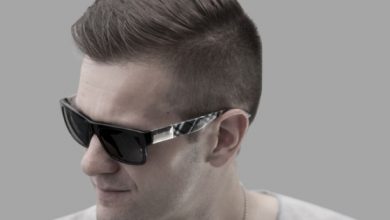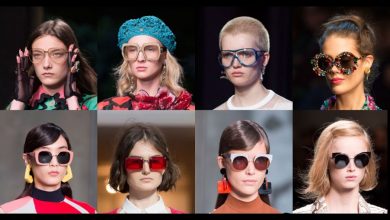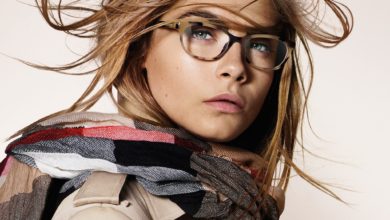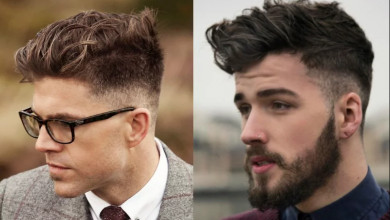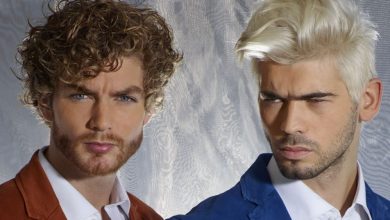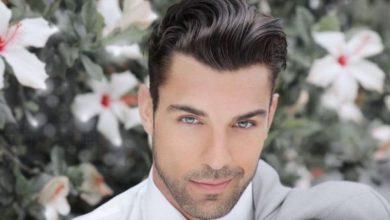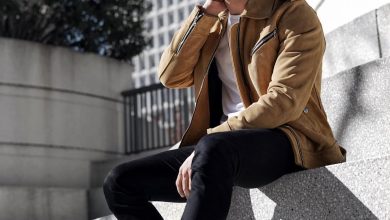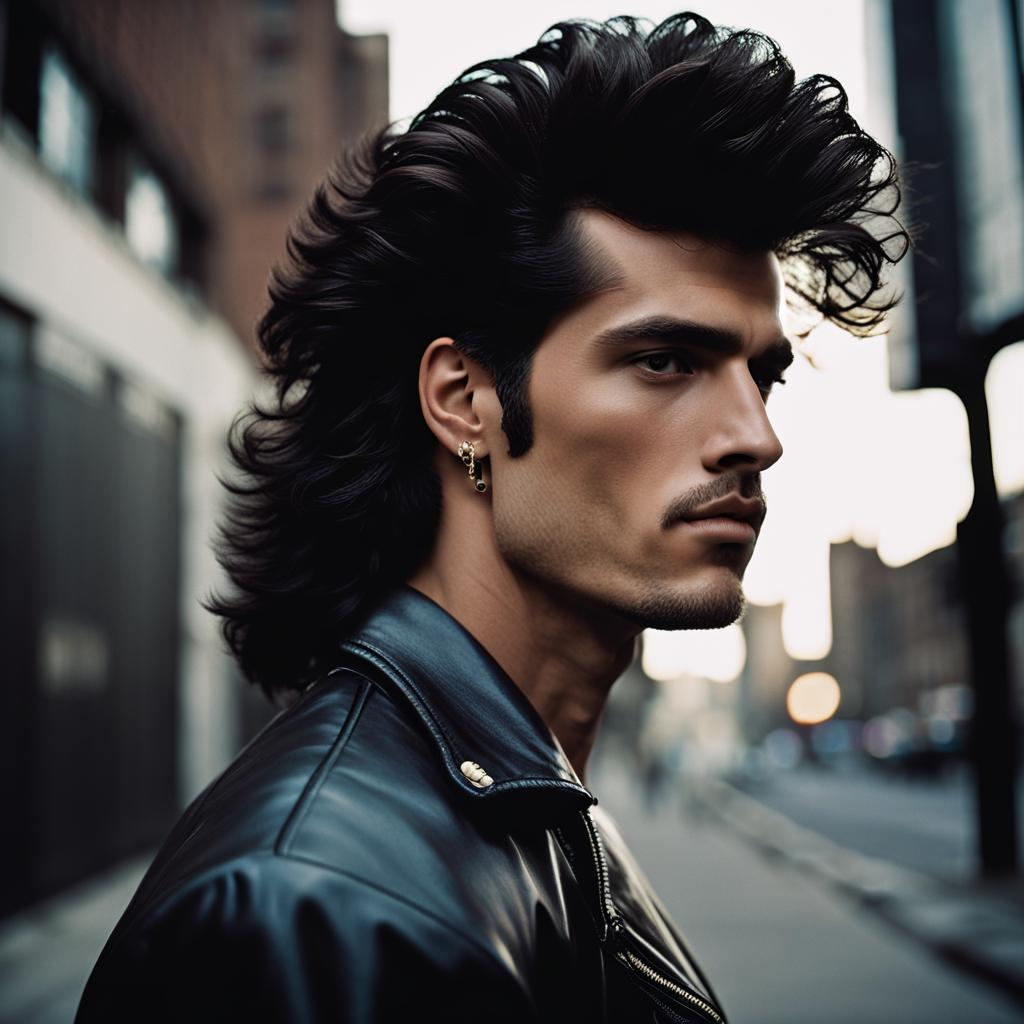
The 1980s was a decade of bold fashion choices, vibrant colors, and unforgettable hairstyles. From the rebellious punk look to the sleek and sophisticated slick back, men’s hairstyles in the ’80s were as diverse as they were iconic.
As a professional hairstylist with over 12 years of experience, I’ve had the pleasure of recreating and modernizing many of these classic styles. In this article, we’ll take a nostalgic journey through the most popular men’s hairstyles of the 1980s, exploring their origins, cultural significance, and enduring influence on contemporary fashion.
Popular 1980s Men’s Hairstyles
The Mullet
The mullet, characterized by its short front and sides contrasting with longer hair at the back, was one of the most recognizable hairstyles of the 1980s. Celebrities like Billy Ray Cyrus and Patrick Swayze popularized the look, which became synonymous with a laid-back, rebellious attitude.
The mullet’s versatility allowed for various interpretations, from the classic “business in the front, party in the back” to more extreme versions with shaved sides and longer, flowing locks.
In recent years, the mullet has experienced a resurgence, with modern adaptations featuring more blended and textured styles. Celebrities like Zendaya and Miley Cyrus have sported updated mullets, proving that this ’80s classic can still make a bold statement in the 21st century.
The Jheri Curl
The Jheri curl, a glossy and heavily styled look, was particularly popular among African American men in the 1980s. This style was achieved using a two-step chemical process that softened the hair and created a loosely curled, wet-looking finish.
Music icons Michael Jackson and Lionel Richie were famous proponents of the Jheri curl, helping to popularize the style within the African American community and beyond.
The Jheri curl held cultural significance as a symbol of black pride and self-expression during a time when natural hairstyles were often discouraged or marginalized. Although the style has since fallen out of favor due to its high maintenance requirements and potential for damaging the hair, its impact on ’80s fashion and African American culture cannot be overstated.
Big, Voluminous Hair
The 1980s saw a trend in big, voluminous hairstyles, often achieved through teasing, blow-drying, and liberal use of hairspray. This look was particularly associated with the glam metal and hard rock music scenes, with bands like Mötley Crüe and Bon Jovi sporting gravity-defying manes.
To achieve this style, hair was typically layered and cut to medium or long lengths. Styling involved applying volumizing products, such as mousses or root lifters, before blow-drying the hair while using a round brush to create lift and body.
The hair was then teased at the roots and smoothed over to create a fuller, more dramatic silhouette. Finally, a generous amount of hairspray was applied to hold the style in place.
The Flattop
The flattop, a short and angular haircut, was a popular choice among men in the 1980s, particularly within the hip-hop and athletic communities.
This style featured hair that was cut short on the sides and back, while the top was left slightly longer and cut to stand upright, creating a flat surface.
Variations of the flattop included the hi-top fade, which featured a more gradual taper and longer hair on top, and the box cut, which had a sharply defined square shape. These styles were often associated with a clean-cut, masculine aesthetic and were favored by celebrities like Will Smith and Mike Tyson.
The Punk Look
Punk rock’s anti-establishment ethos heavily influenced men’s hairstyles in the 1980s, giving rise to edgy, unconventional looks. The mohawk, characterized by shaved sides and a strip of longer hair running down the center of the head, became an iconic punk style.
Other variations included liberty spikes, where hair was gelled and spiked upwards, and dyed in bold, unnatural colors.
The DIY nature of punk fashion encouraged experimentation and self-expression, with many individuals opting to cut and style their own hair. The use of inexpensive products like Elmer’s glue and Vaseline to create spikes and hold styles in place was common within the punk community.
The Slick Back
The slick back was a classic and polished hairstyle favored by businessmen and professionals in the 1980s. This look involved combing the hair back from the forehead and securing it in place with a strong-hold product, such as pomade or gel. The result was a sleek, sophisticated appearance that exuded confidence and power.
To achieve the perfect slick back, hair was first combed back while damp, then dried using a blow dryer directed from the front to the back of the head. A small amount of pomade was then applied to the palms and worked through the hair, ensuring an even distribution.
The hair was then combed back again and styled into place, with the sides and back brushed to lay flat against the head.
Iconic 1980s Male Celebrities and Their Hairstyles
Many male celebrities in the 1980s became style icons, their hairstyles influencing trends and inspiring countless imitators. Some notable examples include:
- Tom Cruise: Known for his boyish charm and daring film roles, Tom Cruise often sported a voluminous, layered hairstyle that perfectly encapsulated the decade’s love for big hair.
- Rob Lowe: With his classic good looks and heartthrob status, Rob Lowe’s feathered, medium-length hair was a quintessential ’80s style that remains popular among men today.
- George Michael: As the lead singer of Wham! and a successful solo artist, George Michael’s perfectly coiffed, highlighted hair became a trademark of his image and a sought-after look for men in the ’80s.
- Prince: A true style icon, Prince’s unique fashion sense extended to his hairstyles, which ranged from a sleek, short cut to a wild, curly mane, often complemented by his signature purple hue.
- David Bowie: Known for his chameleon-like ability to reinvent himself, David Bowie sported a variety of hairstyles throughout the 1980s, from his iconic orange mullet to a bleached-blonde, slicked-back look.
The Evolution of 1980s Hairstyles
Throughout the 1980s, men’s hairstyles underwent a significant evolution, influenced by a variety of factors, including music, movies, and television. In the early ’80s, the remnants of the previous decade’s disco culture could still be seen in the form of longer, feathered styles and the popularity of the perm.
As the decade progressed, the influence of MTV and the rise of music videos began to shape hair trends. Glam metal bands popularized big, teased hairstyles, while the growing hip-hop scene introduced the hi-top fade and the flattop. Movies like “Top Gun” and “Wall Street” also played a role in defining the era’s aesthetic, with slick, conservative styles gaining prominence.
Regional variations and subcultures also contributed to the diversity of 1980s hairstyles. In the United Kingdom, the New Romantic movement, led by bands like Duran Duran and Spandau Ballet, favored androgynous, avant-garde looks with plenty of hairspray and makeup. Meanwhile, in the United States, the thriving punk and hardcore scenes embraced more extreme, DIY styles.
Modern Interpretations of 1980s Men’s Hairstyles
Today, many 1980s hairstyles are experiencing a revival, with modern adaptations that pay homage to the original looks while incorporating contemporary elements. The resurgence of vintage fashion has led to a renewed interest in ’80s aesthetics, with celebrities and influencers embracing updated versions of classic styles.
Some examples of modern interpretations include:
- The undercut mullet: A more subtle take on the classic mullet, featuring shorter, buzzed sides and a longer, textured top.
- The textured quiff: Inspired by the voluminous styles of the ’80s, this look combines a classic quiff with modern texturizing products for a more natural, tousled appearance.
- The updated Jheri curl: While the original Jheri curl has fallen out of favor, modern versions incorporate a more natural, less processed look, often achieved through the use of curl-enhancing products and diffusers.
- The short, textured crop: A nod to the punk and new wave styles of the ’80s, this look features short, choppy layers and a matte, piecey texture.
Conclusion
The 1980s left an indelible mark on men’s hairstyles, with its bold, unapologetic looks continuing to inspire and influence fashion decades later. From the rebellious mullet to the sophisticated slick back, the hairstyles of the ’80s reflected the era’s diverse cultural landscape and the spirit of self-expression that defined the decade.
As a hairstylist, I’ve witnessed firsthand the enduring appeal of these iconic styles and the ways in which they’ve been adapted and modernized for a new generation.
The cyclical nature of fashion ensures that the most memorable looks from the past will continue to resurface, reminding us of the power of hair as a form of personal expression and a reflection of the times in which we live.
FAQs
How can I achieve an authentic 1980s hairstyle?
To achieve an authentic 1980s hairstyle, start by researching the specific look you want to recreate. Gather reference images and consult with your hairstylist to determine the best cut and styling techniques for your hair type and face shape. Be prepared to use a variety of styling products, such as mousses, gels, and hairsprays, to achieve the desired volume and hold.
What products should I use to style my hair in an 1980s manner?
Some essential products for creating 1980s hairstyles include:
1. Volumizing mousse or root lifter for added body and lift.
2. Strong-hold hairspray to keep styles in place.
3. Pomade or gel for slicked-back and wet looks.
4. Texturizing products, such as sea salt sprays or matte pastes, for piecey, tousled styles.
Which 1980s hairstyles work best for my face shape and hair type?
The best 1980s hairstyle for you will depend on your individual face shape and hair type. For example:
1. Round faces may benefit from styles with volume on top and shorter sides, like a hi-top fade or a textured quiff.
2. Square faces can be softened with layered, feathered styles or a classic slick back.
3. Thick, curly hair may be well-suited to a modern interpretation of the Jheri curl or a textured, medium-length cut. Consult with your hairstylist to determine which ’80s-inspired look will work best for you.
Are there any low-maintenance 1980s hairstyles I can try?
While many 1980s hairstyles were known for their high-maintenance routines, there are some options for those seeking a more low-key look:
1. A short, textured crop inspired by the punk and new wave styles requires minimal styling and upkeep.
2. A classic, medium-length layered cut can be easily styled with a blow dryer and a small amount of product for a nod to the decade’s love of volume.
How can I modernize an 1980s hairstyle to suit current trends?
To give an 1980s hairstyle a modern twist:
1. Opt for a more natural, textured finish instead of the heavily styled looks of the past.
2. Incorporate contemporary cutting techniques, such as undercuts or fade, to update classic silhouettes.
3. Experiment with modern styling products, like sea salt sprays and matte pomades, to create a more relaxed, undone aesthetic.
4. Consider subtle color techniques, like balayage or highlights, to add dimension and visual interest to your ’80s-inspired style.

